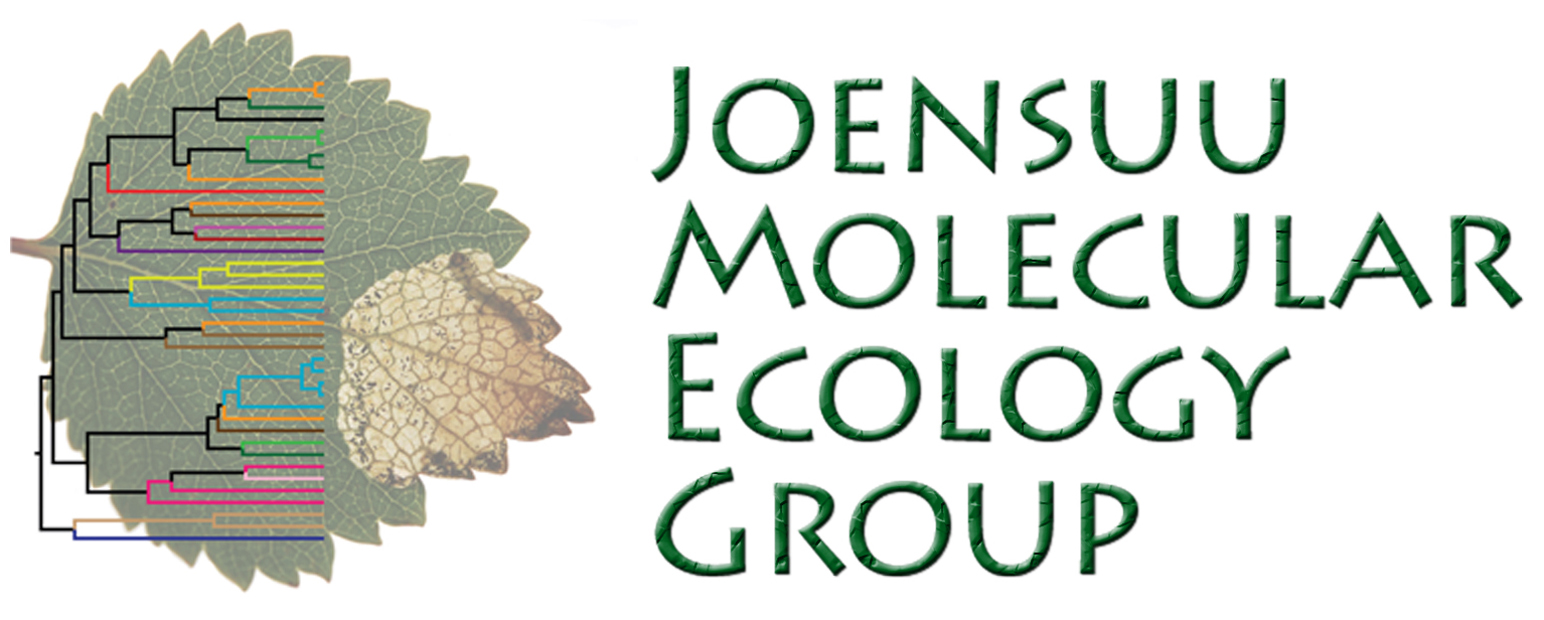 |
||||||||||
Bubbling under: a sneak peek at the bottom of the iceberg Any professional researcher – let alone a group of such! – will be able to generate plans for interesting, fully justified, and doable research projects at a rate that cannot possibly be matched by the immense but still limited resources of governmental and private funding organizations. Consequently, realized research projects will always constitute only the tip of the iceberg – the rare survivors of all plans that have been written to coherent research proposals, the vast majority of which have then been rejected for various reasons. As a demonstration of this fact, below is a non-comprehensive list of some of the most spectacular JMEG failures. Names of external co-applicants have been omitted to protect the innocent (they will be added only by specific request of the collaborators themselves), and proposals still doing rounds are not listed. While some of the plans below have been shot down in flames repeatedly, we consider none of them as complete losses (yet) – several past non-projects have shed their "non-" prefix after years relentless applying. |
||||||||||
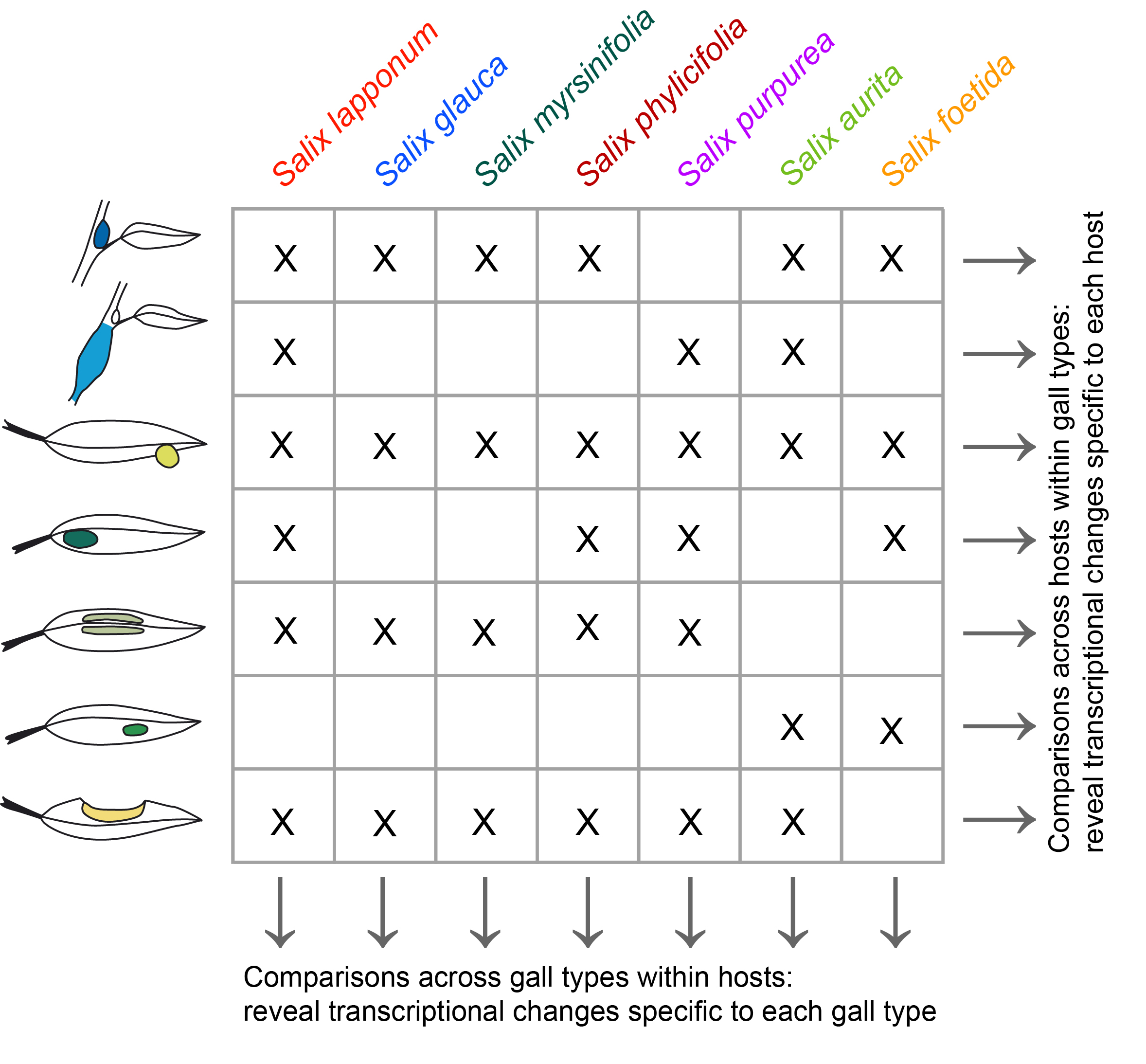 |
Gene expression profiling of willow galls Gall-inducing insects cunningly manipulate their host plants to produce abnormal tissues and structures that nourish the insects or their offspring, and protect them from various environmental hazards and natural enemies. How this astonishing feat is achiveved is still an enigma. It is known that many galls contain elevated levels of growth-enhancing plant hormones, but whether this is the cause for, or a consequence of, the galling stimulus is generally unknown. Together with collaborators from the Umeå Plant Science Centre in Sweden, we proposed to compare gene expression profiles in normal tissues and in galls induced by sawflies and other insects on different Salix species by using Populus microarrays and transcriptome sequencing. Status: After a few failed applications in 2006–2009, the plan was put on the back burner. Since then, several interesting comparative transcriptome studies have been performed and published (link). Nevertheless, the high diversity of willows and willow-galling sawflies still makes them a promising target for comparative analyses: in particular, cross-profiling different galls and willow hosts would allow teasing apart the effects of gall morphology and host species on gene expression. Therefore, and given the ever-decreasing cost of transcriptome sequencing, there is a chance that the plan will be resurrected in the future. |
|||||||||
Testing the Niche variation hypothesis in plant-feeding insects The Niche variation hypothesis posits that generalist species and populations consist of relatively specialized individuals, with the consequence that generalist lineages harbor more among-individual variation in resource use than do specialist lineages. A genetic extension of the NVH predicts that generalists also tend to be genetically more variable than specialists, for example, due to larger average population sizes and wider geographic ranges, and because selective sweeps of universally superior alleles are less likely. Also many variants of the Persistent polyphages hypothesis (right) predict reduced intraspecific genetic diversity in specialists. Together with Swedish and Finnish lepidopterists, American coleopterists, and Finnish geneticists, we proposed to test the existence of niche-width effects on levels of intraspecific genetic variation by performing broad comparative analyses of plant-feeding insects. The plan was designed to ensure unambiguous comparability of diet breadth by using only pairs of closely related herbivores, in which the dietary repertoire of the specialist is a subset of the wider niche of the generalist. Status: The plan is on indefinite hold after a failed pitch at the Finnish Academy in 2008. However, the recent emergence of powerful yet reasonably affordable high-throughput sequencing techniques that are applicable even for museum samples may set the stage for a re-think in the future. Furthermore, HTS datasets produced by large-scale insect phylogeny projects most likely can be used also to estimate intraspecific genetic variation, which would open up new possibilities for phylogeny-based analyses of factors that influence the level of genetic diversity within species. |
 |
|||||||||
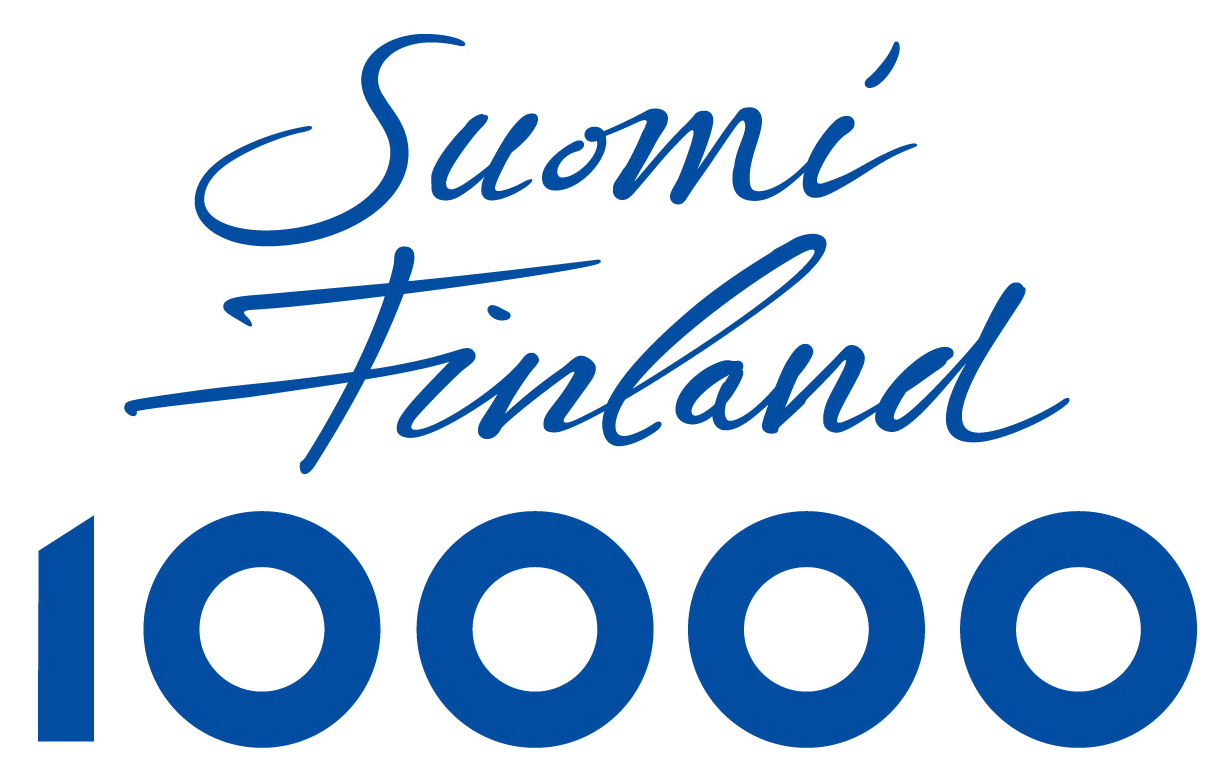 |
Suomi–Finland 10 000 The year 2017 marked the 100th anniversary of Finnish independence, and the centenary was celebrated in the year-long SuomiFinland100 campaign (link). However, the current Finnish land area was freed already 10,000 years ago from beneath the continental ice sheet that covered northern Europe on and off through the Pleistocene Ice Ages. Together with geneticists, archeologists, and geologists from the universities of Oulu and Helsinki, we devised a plan to document the postglacial history of Finnish nature using metagenomic sequencing of carbon-dated slices of sediment cores drilled from the bottoms of large lakes. The aim was especially to investigate the succession of arctic and boreal animal and plant species, to estimate the extent of possible now-extinct landlocked seal populations in postglacial lakes, and to date the transition of humans from hunter–gatherer lifestyles to more sedentary agricultural subsistence in Finland. Status: Project on hold after two failed applications in 2016–2017. Nevertheless, the agriculture-related portions of the project have recently progressed in Helsinki, so the full plan will be resuscitated at some point. |
|||||||||
Biology Teaching Technology Initiative A project proposal for enhancing education in biology and medical sciences by producing 3D image banks and by printing 3D models of various biological structures and species was prepared for the European Regional Development Fund of North Karelia together with collaborators from the University of Eastern Finland in 2014. Status: The plan did not make it past the UEF's strategic panel, which pre-vetted applications by their adherence to the strategy of the university before actual submission to the ERDF. The plan as such is ready and just awaits changes in the composition of the panel. On the other hand, the collaborative resource and exercise bank of Finnish field course teachers, available at www.maasto-opetus.fi, constitutes an offshoot of the original plan. The project was initiated with funding granted by the Kone Foundation in 2017, and website construction will continue through the coming years. |
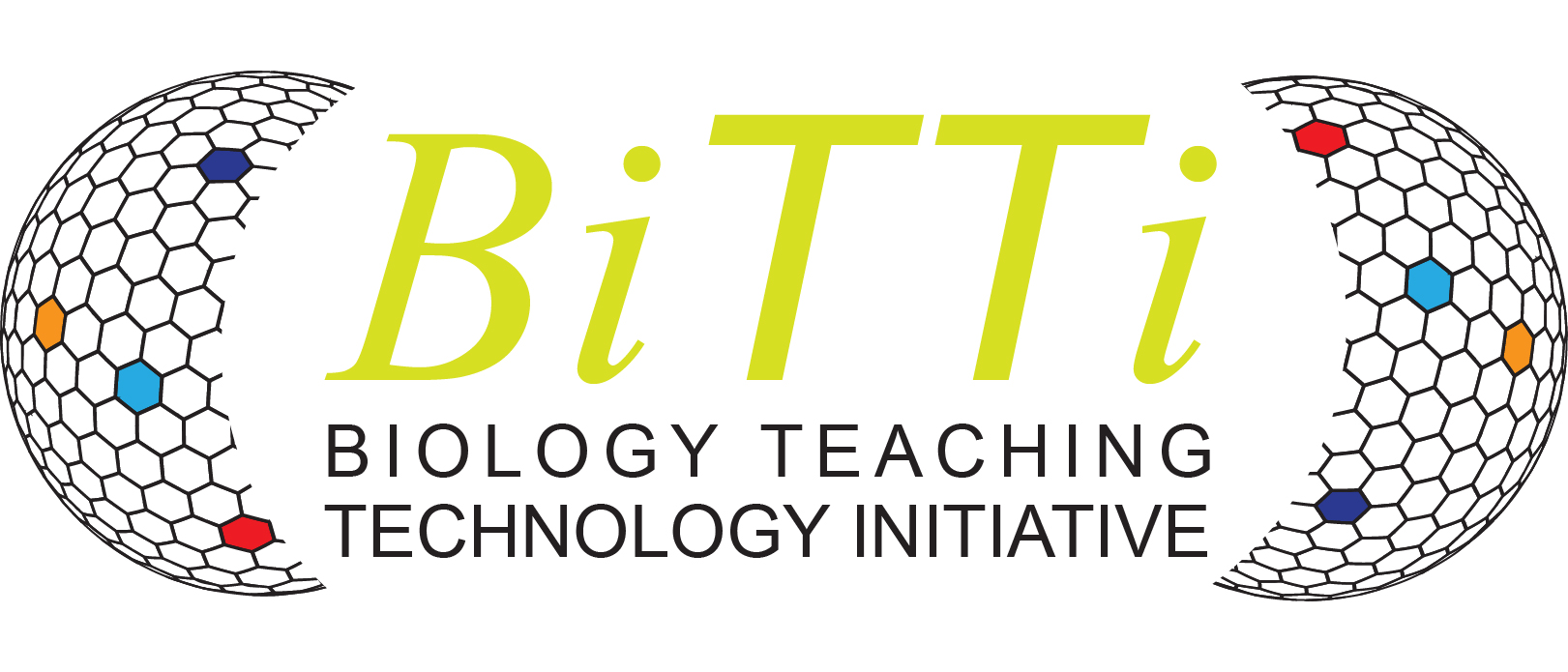 |
|||||||||
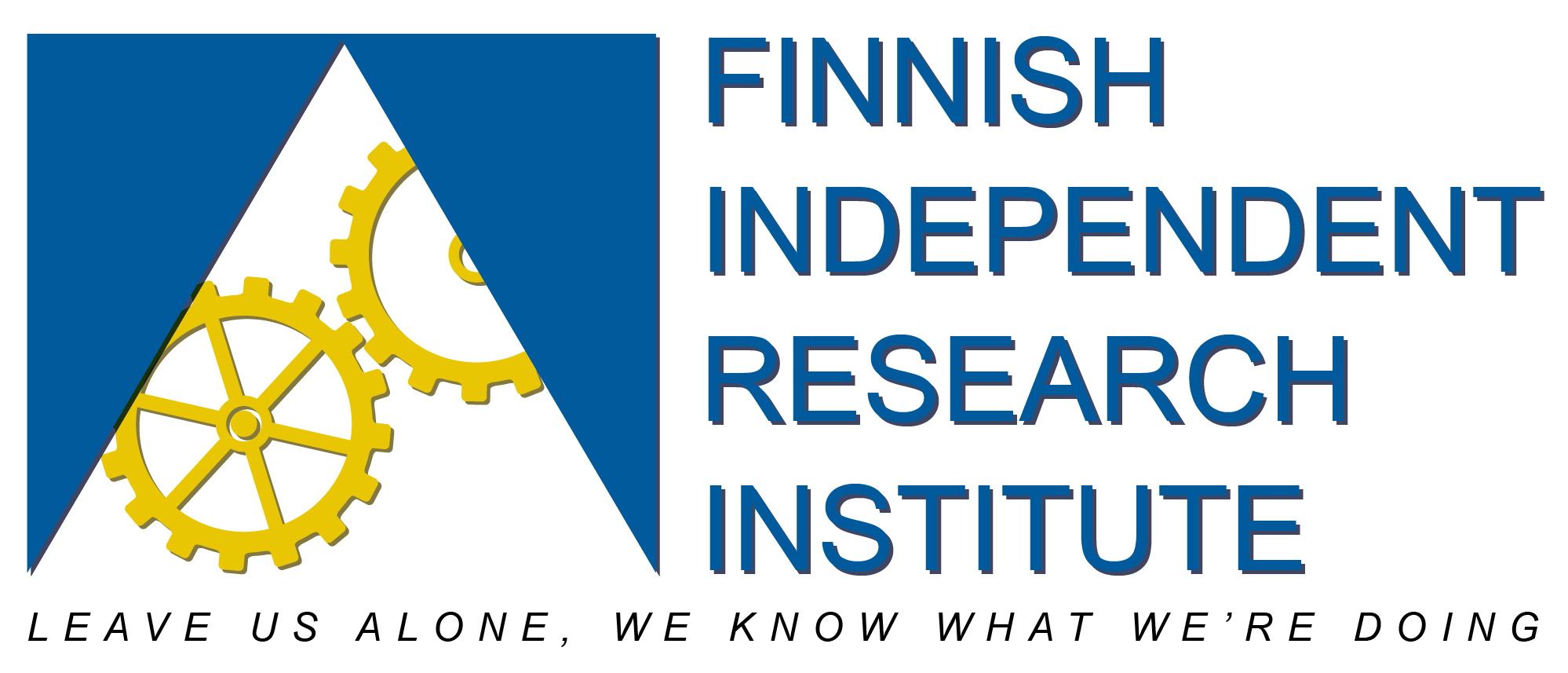 |
Finnish Independent Research Institute Finnish universities rank among the most bureaucratic organizations on the planet. A potential solution to the jamming effects of ever-increasing bureaucracy would be to set up an independent research organization that would serve as a benchmark for assessing the true need for incessant top-down micromanagement and monitoring, and which could demonstrate possibilities for reducing overhead costs and for designing user-friendly information systems. The motto of the still-very-hypothetical institute is adapted from a famous quip by F1 driver Kimi Räikkönen to the bosses of his racing team, who for some mysterious reason felt qualified to give him driving instructions over the team radio in the midst of a 2012 race in Abu Dhabi (link). Status: A low-intensity search for potential funding sources is underway. The independently-operated Station Linné in Sweden provides a possible model for organization and funding (link). |
|||||||||
Cute Animals Research Project This is technically speaking not a non-project at all, but rather a friendly insult towards our dear colleagues and collaborators in the UEF's Saimaa Ringed Seal Research Group – lately they have expanded their research agenda to include also telemetry and conservation biology of hedgehogs and hares. By contrast, after a brief stint in seal population genetics, the JMEG has reverted to more comfortable levels on the subject cuteness scale (i.e., insects, intestinal worms, and lice). Status: Alive and kicking (link). |
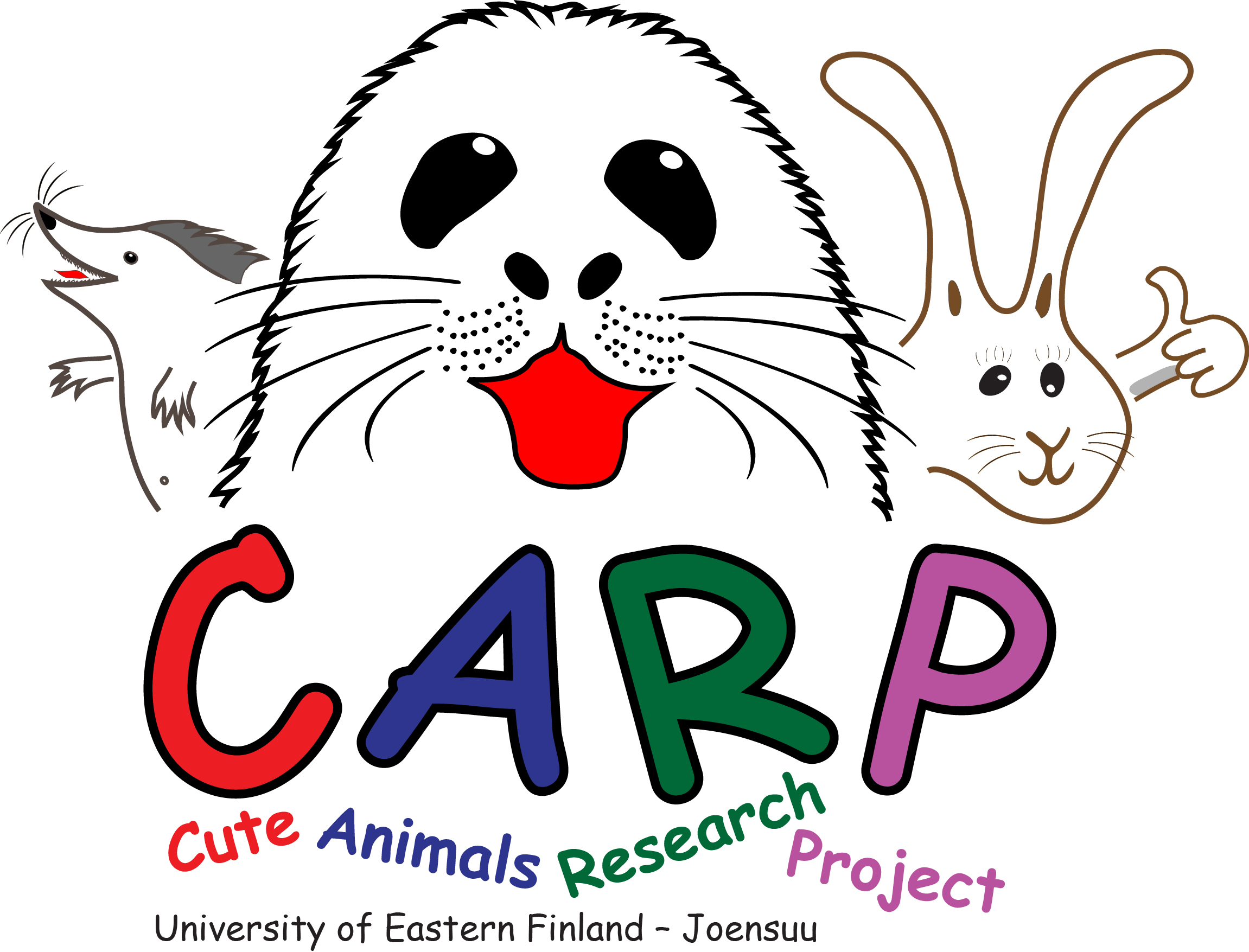 |
|||||||||
|
||||||||||